Strangest Things Found Washed Up On Beaches

January 31, 2025
•24 min read
From huge eyeballs to expensive vomit, lets take a look at the strangest things found washed up on beaches!
You just can’t beat the feeling of on a beach. Sipping margaritas on the sand might seem like paradise, but the terrifying truth is that you never know exactly what’s hiding beneath the waves. Just about anything can turn up on the shore, and here are some of the strangest things people have ever discovered.
Ambergris
A couple in Lancashire, UK, who discovered this rugby-ball sized, greyish rubbery mass in 2016 described its potent smell as something like a cross between a squid and farmyard manure. You might wonder who in their right mind would stop to pick up something so gross, but this disgusting object earned the couple a cool $70,000!
UK couple finds whale vomit on beach worth £50,000 |More here: goo.gl/MY80Ud #CitiNews
Beach Buoy Turns Out To Be WW2 Bomb
There’s nothing more wholesome than a family day out at the seaside. In August 2015, one family on the coast of Burry Port in Wales spotted a large, round object in the distance and decided to investigate further.
As they arrived at the scene, the Gravell family were pleasantly surprised to discover a huge buoy covered in colorful gooseneck barnacles which had been washed ashore. It looked pretty ancient, and the kids posed for pictures in front of it and even picked the little critters off the side.British family photographs kids with ‘beach buoy’…that is actually a WWII-era bomb: abcn.ws/1Kw6Lh4
Ice Balls
When you think of the beach, probably the last thing on your mind is snow unless you’re from a small town in Siberia, that is. In November 2016, locals in from the Gulf of Ob in Western Siberia were gobsmacked when they arrived at the seaside to find the shore covered in thousands of perfectly-formed ice balls.
Anyone up for a huge snowball fight? Thousands of snowballs size up to 1m were spotted in Siberia bit.ly/2esikNG
Purple Blob
Not everything that winds up on the beach can be easily explained, and this next object even left scientists scratching their heads. In July 2017, an unsuspecting beachgoer at Leo Carillo State Park in Malibu spotted something equal parts intriguing and repulsive partly buried in the sand.
They snapped a photo and took to Reddit for answers, assuming that the white-and-purple decaying fleshy blob could only be the discarded organ of some large sea creature. The unidentified lump weighed about 7lbs and measured about 5inches across, and many initially claimed that it was actually a large type of sea-slug called a sea hare, which can weigh up to 30lb. Greg Rouse, a professor of Marine Biology at the University of California, disagreed because sea hares are soft, but this organism seemed to have a visible rim. Upon closer examination, Rouse decided it was more likely a Pleurobranchaea californica or sidegill; another form of sea-slug which can usually be found in depths between 10-1,200ft. Another contender is the keyhole limpet, which can grow up to 5 inches and have a small shell on the side of their bodies. Whatever it was, scientists agreed on one thing: it was definitely dead. Those round, purple parts are probably its gut bulging out due to bloating.Kinder Surprise Eggs Wash Onshore
The ocean isn’t always as unforgiving as we think. In fact, sometimes it can be pretty generous. In 2017, the German Wadden Sea island of Langeoog received an unexpected gift when thousands of colorful plastic kinder surprise eggs washed up on shores. The eggs are thought to have come from a Danish container ship that lost some of its cargo during a particularly nasty storm.

Megalodon Tooth
The ocean is like one big watery grave containing ancient artefacts which span right back to the dawn of the dinosaurs. In June 2019, Harvey Wall was given an unexpected reminder of just how terrifying the past could be when he happened across a part-exposed tooth on Ocean Isle beach in North Carolina.
After washing it off and examining the object more closely, Wall realized this wasn’t just any old tooth. With a total span of nearly 6inches and a huge black root, this incredible find could only belong to one creature: the megalodon. This truly formidable shark is now thought to have disappeared some 3.6 million years ago, and weighed the equivalent of 10 adult elephants with a maximum span 15ft longer than the average school bus.Massive Drift Log
Of all the things you might expect to come rolling in on the waves at the seaside, a ginormous tree is probably not one of them. That’s exactly what happened in Washington USA in 2010, though, when unsuspecting beachgoer Philip Lachman came across this monster while taking a stroll along the sand.
Photographer found himself dwarfed by driftwood on the beach.
Once again thinkin’ about the giant western red cedar trees that washed up on La Push beach in Washington and how vast and terrifying the ocean truly is.
The Globster
The deep sea is so unexplored that it’s hard to deny the possibility that real-life sea monsters might actually dwell below the waves, especially when one washes up on your local beach.
In May 2018, locals visiting the beach in the Philippine province of Oriental Mindoro could hardly believe their eyes when they saw what lay lifeless in the shallow waters by the shore. About the size of a truck and giving off a smell so pungent it made residents want to puke, a hairy beast later nicknamed "The Globster" had been beached on the sand.Mysterious hairy sea creature dubbed a 'globster' washes up on beach mirror.co.uk/news/weird-new…
Huge Eyeball
One of the most strangely compelling things to wash up on the beach was found in Florida in 2012, it does have a reputation to uphold, after all. A man scouring Pompano Beach probably got the fright of his life when he looked down to see a giant eyeball staring right back up at him.
Misterioso globo ocular gigante aparece en playa de #Florida . unvrso.ec/000462B
Mysterious Pipes
The British coast might not be so well-accustomed to mysterious sea monsters, but a fair share of unusual objects have still made their way on to shores. One of the strangest discoveries by far was made in August 2017, when a collection of 12 enormous pipe segments suddenly turned up on the Norfolk coast at Winterton and Sea Palling.
Double-Headed Dolphin
Of all the weird and wonderful creatures in the ocean, not to mention the down-right terrifying things that lurk in its deepest depths, dolphins are some of the most well-loved. They’re highly social and intelligent animals who always seem to have a cheeky grin on their faces. But in August 2014, a dolphin that washed ashore in the district of Izmir on Turkey’s west coast put the heebie-jeebies into anyone who laid eyes on it. Why? Well, because it had two heads!
Two-headed dolphin washes up at beach azc.cc/1osHFtU
Dead Starfish
In March 2018, beach-goers from the town of Ramsgate in Kent, U.K. were gobsmacked to discover that their local stretch of sand appeared to have been replaced by a mass-dumping of tiny bones. As they got closer, they realized that the reality was thankfully not so terrifying, but certainly no less strange. It turns out an entire galaxy of starfish had washed up on the sand, where they lay stranded and unmoving as if they’d been suddenly dropped from the heavens above.
Dead starfish & lobsters have been washed up & scattered on UK beaches after the recent cold weather bbc.in/2D0ltAw
Whisky Galore And The SS Politician
Let’s go back in time for a moment to 5th February 1941, when the inhabitants of an island off the coast of Scotland were about to get really, really lucky. That morning, the trade ship SS Politician was heading north past the Outer Hebrides on route to Kingston, Jamaica, and New Orleans when it ran into some rough weather.
After passing the Isle of Man, extreme winds drove the ship off course; and despite efforts to regain control the SS Politician eventually foundered on the unseen sandbanks off Rosinish Point on the Isle of Eriskay. The ship was carrying all manner of goods from cotton to medicines and biscuits, but it’s best remembered for the loot of Hold Number 5: some 264,000 bottles of Scotch whisky. As the islanders caught wind of the situation unfolding at sea, they excitably headed to the beach where they were met with thousands of bottles of the sweet nectar that had washed ashore. By the time the authorities had declared that the whisky wasn’t ‘fair game’ to take because it was headed to the US, and therefore no duty had been paid on it yet, 24,000 bottles of the stuff had already been swiped in unofficial “salvage operations”.Cigarette Galore Wash Up On UK Beaches
Moving swiftly on from one of man’s greatest vices to another, a two-mile stretch of sand on England’s Chesil Beach was gifted with another bizarre loot in 2014: millions of cigarettes. A 40-foot-long box containing about 11million cigs totaling some 14tonnes washed ashore on Axmouth beach in Devon, while millions of packets littered the British coastline.
The Danish cargo ship Svendborg Maersk had been sailing around the Atlantic coast of Europe in February on its way to Sri Lanka when it was battered by hurricane-force winds which toppled its cargo. The ship started losing its hoard off northern France after it was hit with 30ft waves and 60-knot winds, and in total around 520 containers were lost overboard during the storm. Thankfully, the shipping company said about 85% of the containers were empty, while the remaining ones contained dry goods, which included cigarette shipments worth some $4million. It might seem like a goldmine for anyone business-savvy enough to bag up the cigs and sell them on for a tidy profit, but before locals could get their thieving mitts on them the authorities announced that they already had a far more useful plan in mind. Bob Gaiger, a spokesperson for HM Revenue and Customs, explained that the cigarettes would be gathered up and taken to an approved power station, where they would be incinerated in a controlled environment to help produce electricity. Less cancerous cigarettes and more electricity for the national grid? Sounds like win-win!The Montauk Monster
If you’re a veteran internet user, you’ve probably seen this next image before. The stomach-churning photograph claims to show a genuine sea-monster that supposedly washed up on the shore of Ditch Plains, a popular surfing beach on the Montauk peninsula, back in July 2008.
The Montauk Monster...
The Maid Of Harlech
The ocean is so vast and mysterious that it seems just about anything can be lost in its depths until the passage of time causes it to be uncovered or washed ashore, that is. A remarkable discovery was made off the coast of Wales when the wreckage of a rare World War II fighter plane emerged from its watery grave after years of hiding.
George Parker-Bidder’s letters
Here’s a little piece of history. In 2015, walkers on the North Sea coast in Germany found a message in a bottle. “Probably a kid having fun nearby or something” is what they thought. When they opened it, the message inside was undated, so they weren’t sure of its age, but they later discovered that this bottle had actually been in the sea for an astonishing 108 years.
It contained instructions to send a postcard to the Marine Biological Association in Plymouth in England. So, that’s what they did. It turns out the bottle was one of 1000 released into the North Sea between 1904 and 1906 by scientist George Parker Bidder, who was investigating tidal currents. Of course, George wasn’t there to add this result to his research in 2015, and he might have been a bit disappointed to hear it hadn’t even made it out of the North Sea in 108 years. A nice person in Plymouth still went to great lengths to honor the monetary reward promised though. They had to go on Ebay to buy an old English shilling! If you want to find out more about messages found in bottles, we have a whole article about it.Doritos Washed Ashore
Our seas are full of way more things that just fish. On top of our oceans, there are thousands of ships carrying cargo from one location to another every single day. So, what happens if there’s a crash? Or if some of those cargo containers get dropped into the water? Eventually, things will get washed up onto the shore and this happened after a big storm in 2006. A container full of nothing other than thousands of bags of Doritos washed up on a beach in North Carolina.
17 years ago today a container filled with 8,000 bags of Doritos washed ashore at the Frisco Bath House. Hatteras Island residents were deep in Doritos for days. (courtesy Graveyard of the Atlantic Museum) #obx
World War 2 love letters
Some people’s true love may be potato chips, but this entry is the story of a much greater love than that. One day after the devastating Hurricane Sandy, a 14-year-old boy was walking along a beach in New York. The storm washed several things ashore, including a set of letters, tied together in a pink ribbon.
They were a set of touching World War 2 love letters between a New Jersey woman named Dorothy Fallon and her husband-to-be Lynn Farnham, who was away serving in the Pacific. They chronicle their love story, spending six years apart until 1948, with the last letter beginning: “Darling, two weeks and we will be married.”Severed Feet
Every now and again, something truly horrifying washes up on the coast on British Colombia in Canada and Washington in the US. Severed human feet. Still in their shoes. The feet of over 14 different people have been found.
Human foot found on Canadian coastline - the 15th since 2007 cbsn.ws/2Ia3LSH
Glass Beach
In Fort Bragg in California, there’s a glass beach. For the first half of the twentieth century, nearby beaches were used as a dumping ground for old glass and other big household items. Over time, large amounts of glass has washed up on beaches here. Sounds pretty dangerous, right? But it isn’t. The ocean has worked its magic and smoothed the glass down. It’s full of beautiful colorful glass pebbles.
Ego Leonard: No Real Than You Are
Another cargo ship issue led to hundreds of pieces of Lego being washed up on the beaches in Devon and Cornwall on the South coast of England. But, that doesn’t even come close to the weirdest Lego find ever. Look at this giant Lego figure in the image below.
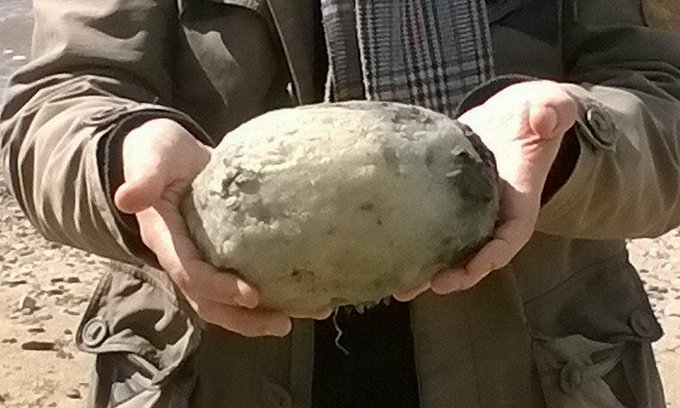






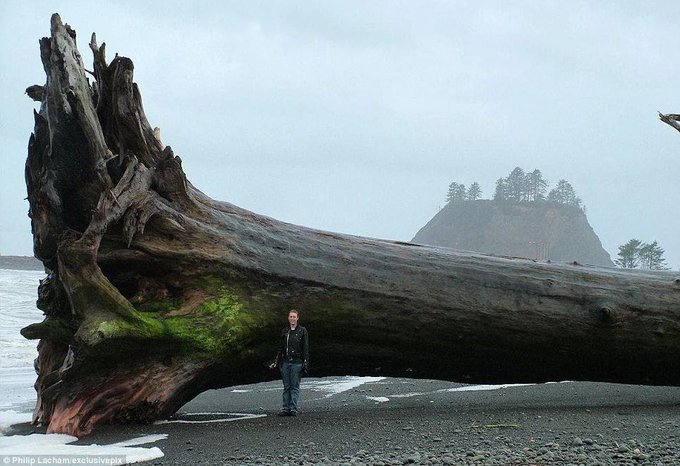
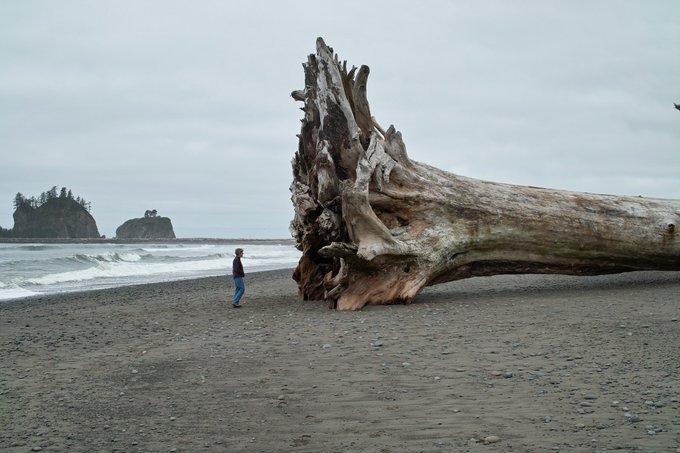
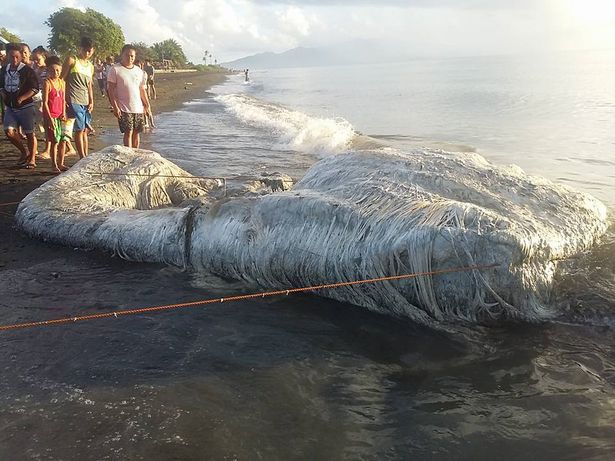
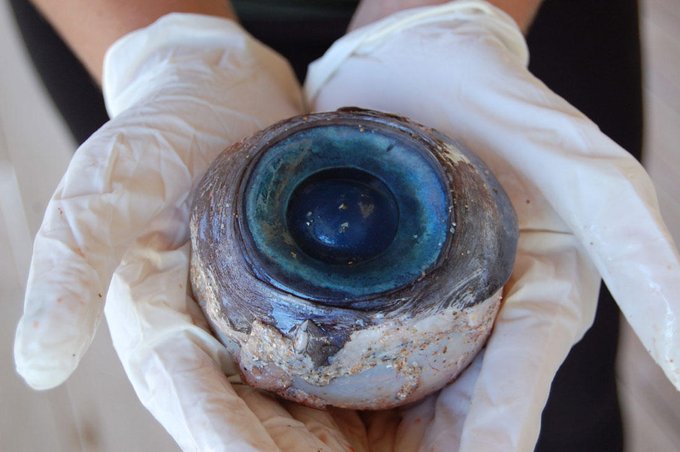
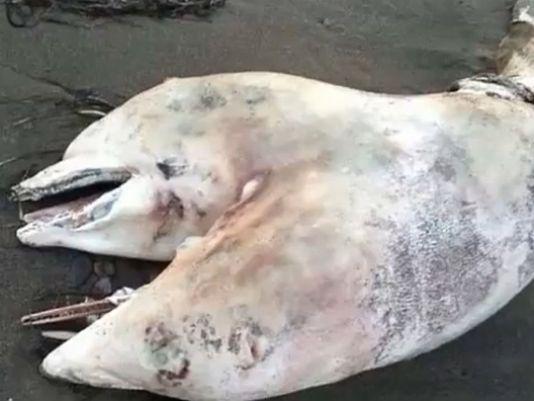


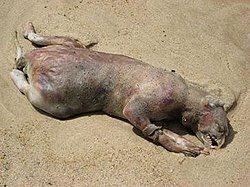
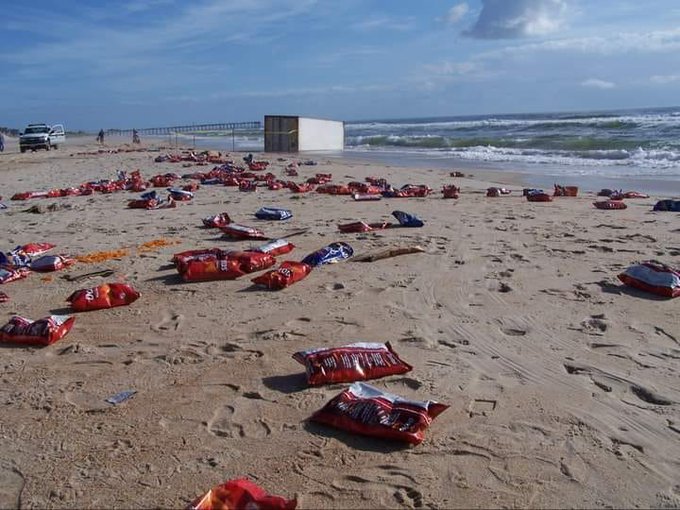





](https://beamazed.b-cdn.net/dfhvoxjgb/image/upload/v1716774701/things-real-estate-agents-dont-want-you-to-know/7AryMoPOy4rsTiLwDNjNdx.jpg?width=400)







